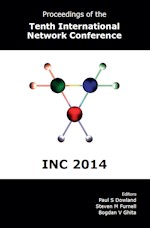In 2014, we launched our open-access repository which offers full text access to conference proceedings from many of our events including the INC and HAISA series. These papers are free to access and distribute (subject to citing the source).
» Openaccess proceedings » Tenth International Network Conference (INC 2014)
 | Tenth International Network Conference (INC 2014) |
Title: An Overview of Interworking Architectures in Heterogeneous Wireless Networks: Objectives, Features and Challenges
Author(s): Omar Khattab, Omar Alani
Reference: pp71-79
Keywords: Heterogeneous Wireless Networks, IP Multimedia Subsystem, Loose Coupling, Media Independent Handover, Tight Coupling, Vertical Handover
Abstract: Loose coupling and tight coupling are two main interworking architectures have been proposed by European Telecommunication Standards Institute (ETSI) for integrating between the different types of technologies (3GPP, non-3GPP) such as Global System for Mobile Communication (GSM), Wireless Fidelity (Wi-Fi), Worldwide Interoperability for Microwave Access (WiMAX), Universal Mobile Telecommunications System (UMTS) and Long Term Evolution (LTE). On the other hand, Media Independent Handover IEEE 802.21 (MIH) and IP Multimedia Subsystem (IMS) frameworks have been proposed by IEEE group and 3GPP, respectively to provide seamless Vertical Handover (VHO) between the aforementioned technologies by utilizing these interworking architectures to facilitate and complement its work. In this paper, we overview loose and tight coupling interworking architectures and highlight their objectives, features, and challenges. Then, we conclude that loose couple is more suitable with MIH and contributes for enhancing its vital role in heterogeneous wireless environment.
Download count: 2694
How to get this paper:


PDF copy of this paper is free to download. You may distribute this copy providing you cite this page as the source.
